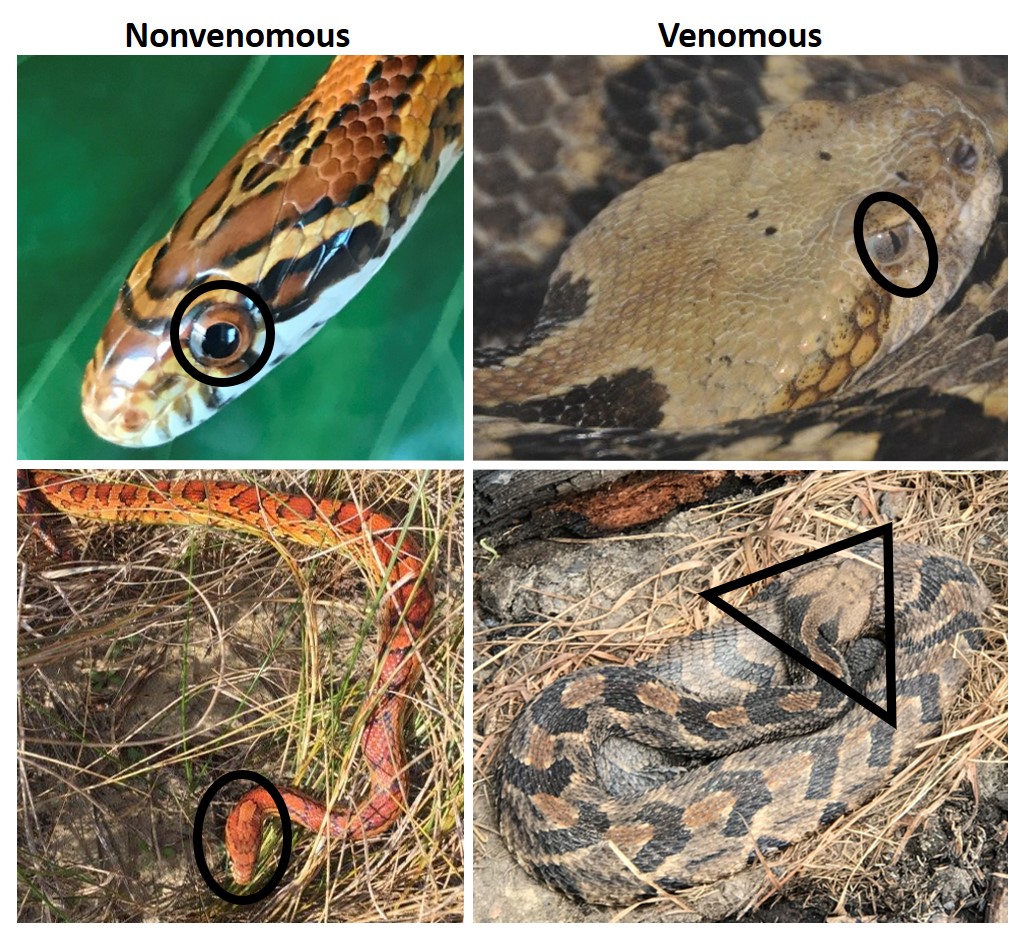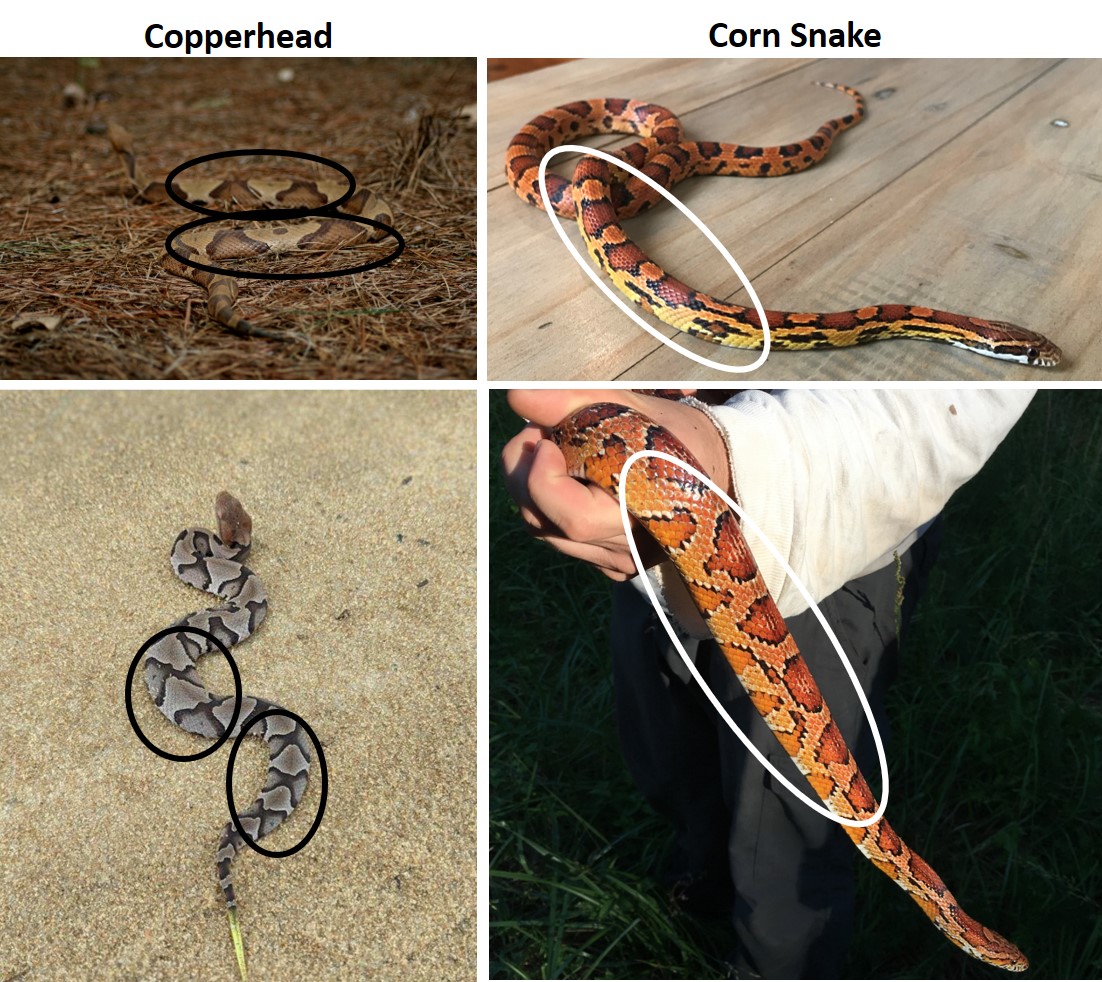Snakes at Lake Robinson play an important role in nature, and we should leave them alone
By Andrew Grosse and Greg Lucas
Let’s get one thing straight right off the bat—NO venomous water snakes inhabit Lake Robinson in Greenville County!
If you are reading this article, most likely someone has told you at some point in your life that they have killed (or heard that someone killed) a venomous cottonmouth in Lake Robinson. NOT TRUE! You must travel nearly 150 miles from Lake Robinson to the closest place in the Fall Line Sandhills, near Camden, to find the nearest venomous cottonmouth, or water moccasin, species. (The Cottonmouth Line, along with the American Alligator Line, is the Fall Line Sandhills, which cuts diagonally through South Carolina, roughly following US 1 and Interstate 20. From that line to the Atlantic Ocean—the region is known as the Coastal Plain—is where you find cottonmouths and American alligators.)
Lake Robinson DOES have NON-venomous water snakes, and they are most likely to be the Northern water snake. They are primarily fish eaters, and they are an essential part of a healthy wetland ecosystem. Non-venomous water snakes like the Northern water snake keep fish populations healthy and strong by eating fish that are sick or perhaps even dying.
Lake Robinson and surrounding areas are being heavily developed. People in nearby subdivisions often post, on NextDoor and similar apps, about snakes in their backyards and maybe in the lake, wanting to know if the snake is dangerous, and often how to get rid of it. So, with all this development, there is even less habitat for snakes and other wildlife. It is incumbent upon us, as good stewards of the Earth, to appreciate and respect snakes, and do what we can to help them thrive—and certainly don’t kill them!
There are many good reasons to leave snakes alone, and here are just a couple of examples: 1) the Eastern king snake has a propensity for devouring venomous copperheads, and is immune to its venom. Which is why many people, even those who don’t like snakes, LOVE having an Eastern king in their yard; and 2) rodents such as rats and mice, which have a bad habit of chewing electrical lines, are a favorite meal of the Eastern rat snake, also known as a black rat snake in the Upstate.
South Carolina is home to 38 species of snakes that are variable in size and color and can be found in a variety of habitats throughout the state. Of the 38 species of snakes in South Carolina only six are venomous. (We only have three species of venomous snakes in Upstate South Carolina.) It is much more common for people to see a harmless nonvenomous species than a venomous one. Some are cryptic and rarely seen despite their vivid colors and unique pattern, like the highly aquatic mud and rainbow snakes, while others can be quite common like rat snakes and black racers.
Snakes are an important part of a healthy ecosystem and play a significant role as both predators and prey. As predators, they regulate rodent populations, which, in many cases, act as the primary vectors for ticks and tick-borne diseases, such as Lyme disease. As prey, snakes provide food for a variety of birds, mammals and even insects and other snakes, like the Eastern king snake.
In the Upstate you can find several species of snakes including some of the more common species such as Eastern garter snakes, ringneck snakes, brown snakes, red-bellied snakes, black racers, rat snakes, and corn snakes. Unfortunately, many of these species are often mistaken for venomous species and unnecessarily killed.
While there can be a lot of variation in how individual snakes behave and appear, observing the head and pupil shape may help differentiate venomous from nonvenomous species. In general, the pupils of nonvenomous snakes are round while those of venomous pit viper species are elliptical or cat-like. Additionally, the head shape of nonvenomous snakes tends to be oval or box-shaped, while venomous pit viper species tend to have a more triangular shaped head. Another way to think about it is that venomous pit viper species have a clear distinction where the head stops and the body/neck begins while nonvenomous species tend to have a smaller head that is roughly the same size as the body.
 |
| SCDNR photos by Andrew Grosse |
One of the best ways to differentiate venomous versus non-venomous snakes in South Carolina is the shape of the pupils, which can be seen from a safe distance away. These photos also show the difference in the head shape—pit vipers such as the copperhead have a triangular-shaped head, although that is a less reliable indicator, since some non-venomous snakes flare out their head when in a defensive posture. Non-venomous snakes have a smaller head that is roughly the same size as the body. On the left are the round pupils of the non-venomous corn snake, while on the right are the elliptical pupils of the venomous copperhead.
One important exception is the coral snake, arguably the most cryptic of our venomous snake species, which is adapted to digging and lives primarily underground and is found in deep sandy habitats in our coastal plain. While their brightly colored red, yellow and black pattern helps distinguish them from most species, their head and pupil shape look more like a nonvenomous species than one of our five venomous pit vipers. Another notable exception to consider is, when threatened, many nonvenomous species will flatten their heads to appear more intimidating, so using only head shape as a distinguishing characteristic may not be reliable.
Two species that are often mistaken for one another are corn snakes and copperheads. While it can be quite variable, the overall pattern can help differentiate the two species. In general, copperheads have a pattern that is thicker on the side and thinner on top. Some say it looks like an hourglass from above and a Hershey Kiss from the side. In contrast, corn snakes, as well as juvenile rat snakes and black racers, will have the thicker portion of their pattern on top and appear to have saddles if viewed from above.
 |
|
These photos show the differences between the venomous copperhead snake and the non-venomous corn snake, which is often killed due to its faint resemblance to the copperhead. SCDNR photos by Andrew Grosse |
Regardless of the species in question, all snakes have an important role in the ecosystem. If you are fortunate enough to see a snake, give it some space and enjoy it from a distance.
Additional information can be found at: https://www.dnr.sc.gov/wildlife/herps/snakes.html
Also, for assistance with snake identification, go to this web page for information on sending a photo of your snake to the Clemson DNR office: https://www.dnr.sc.gov/wildlife/snakes/assistance.html
(Andrew Grosse is the state herpetologist for the S.C. Department of Natural Resources (SCDNR) and Greg Lucas is SCDNR’s public information officer.)
